Project details
Skill
Cost
Estimated Time
A driveway apron is the transitional area where your driveway meets the street. This area typically extends about 10 feet up from the curb and is often constructed of the same material as the rest of the driveway. However, this often overlooked section of your property can be transformed into a beautiful feature of your home’s exterior with a simple weekend DIY project. By replacing the standard asphalt or concrete with decorative cobblestones, you can create a charming entrance to your property. This Old House senior technical editor Mark Powers shows you how to transform a plain driveway using concrete cobbles.
Driveway Apron Build Timeline
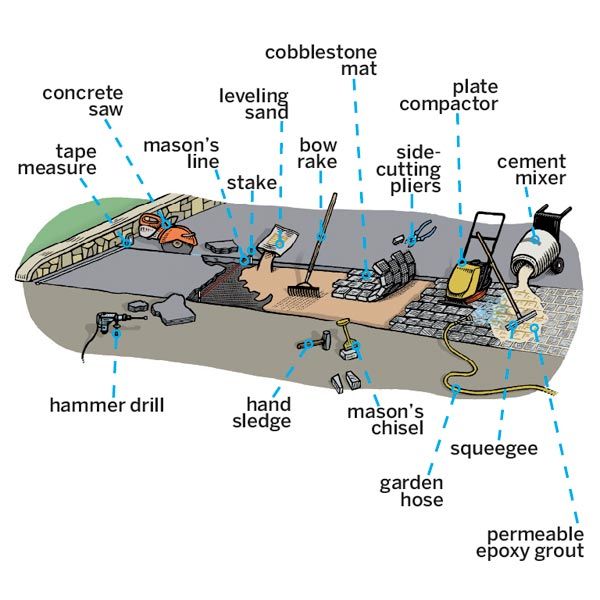
Day-to-day Timeline
Friday: Measure and mark the driveway and remove the old paving (Steps 1-5).
Saturday: Prepare the bed, lay the cobblestones, and grout (Steps 6–18).
How To Build a Cobblestone Driveway Apron
Below we explain how to build a cobblestone driveway apron:
1. Measure the Driveway
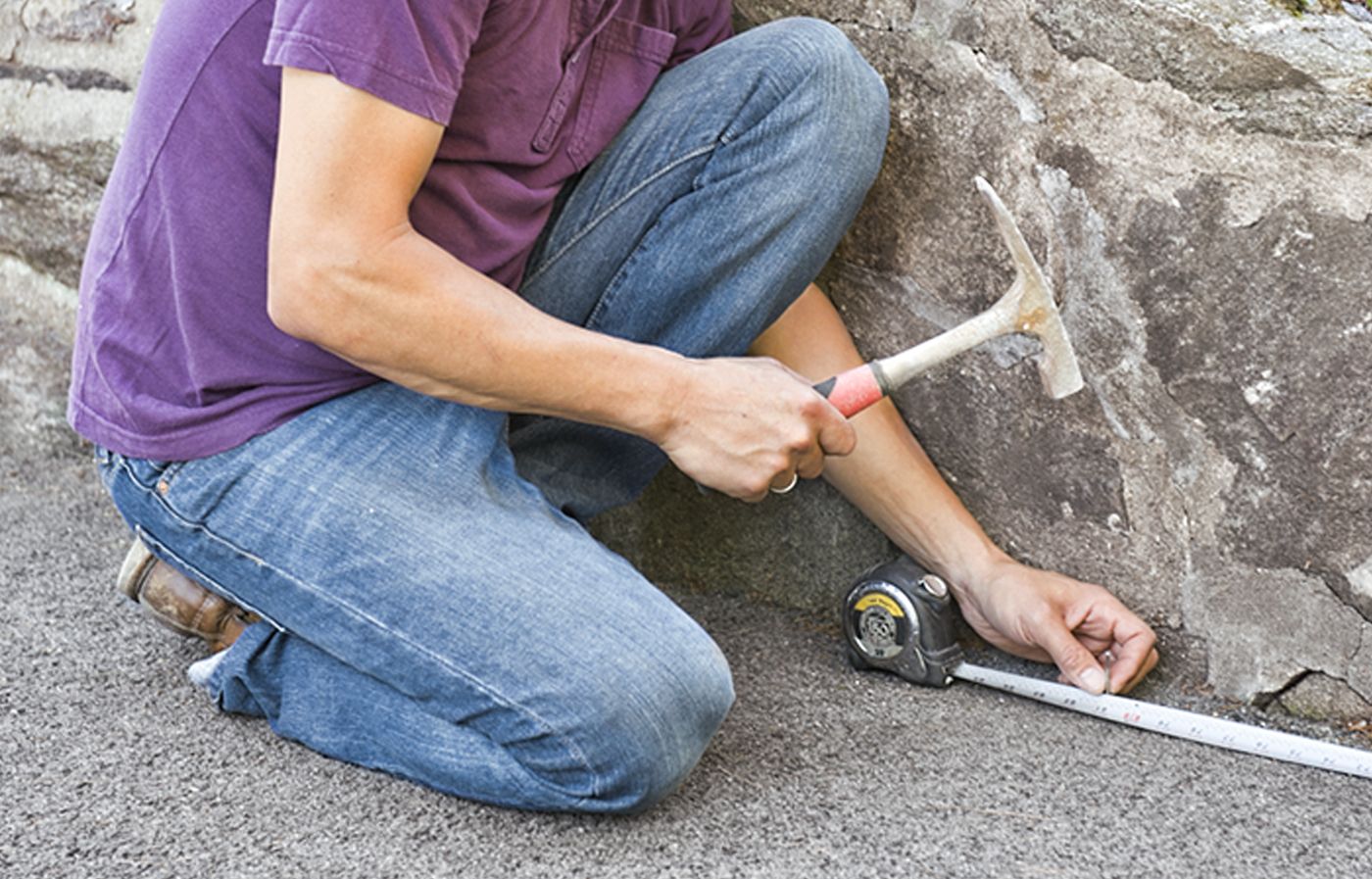
- A typical driveway apron extends 10 feet up from the street—in many places, smack in the public right-of-way. So before you begin, check that your plan doesn’t violate local codes or any association bylaws.
- If you’re clear, measure 10 feet up from the street along the shortest side of the driveway and mark that spot; use a nail if your drive is asphalt or chalk if you have concrete.
2. Mark a Cutline
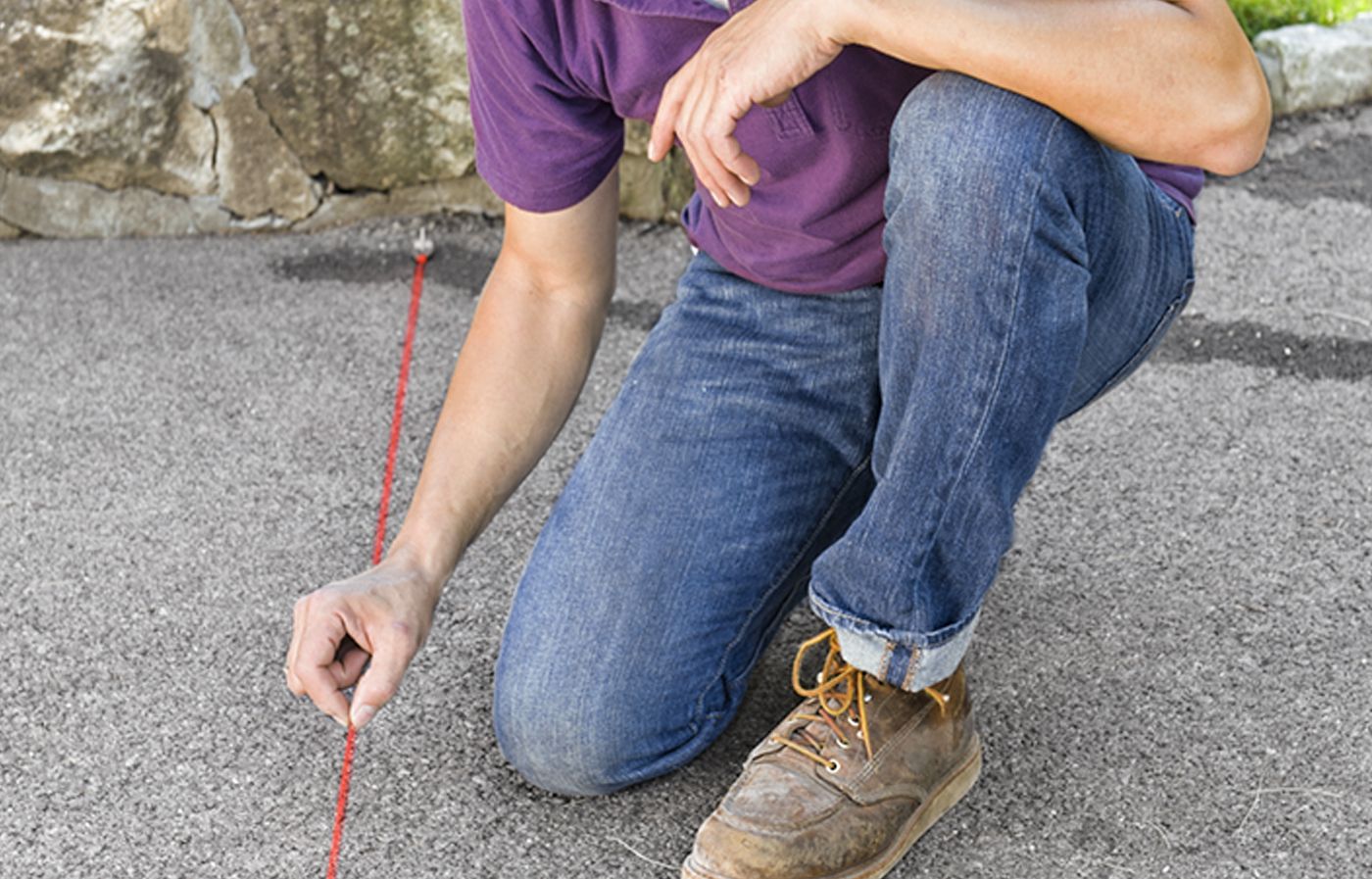
- Tie a chalk line to the nail and run it to the other side of the driveway, perpendicular to its centerline.
- Snap the line. If your drive is concrete, enlist a helper to hold an end of the line at one mark, pull it taut to the other mark, and snap it. Now you have a cutline for the top of the apron.
3. Cut the Driveway
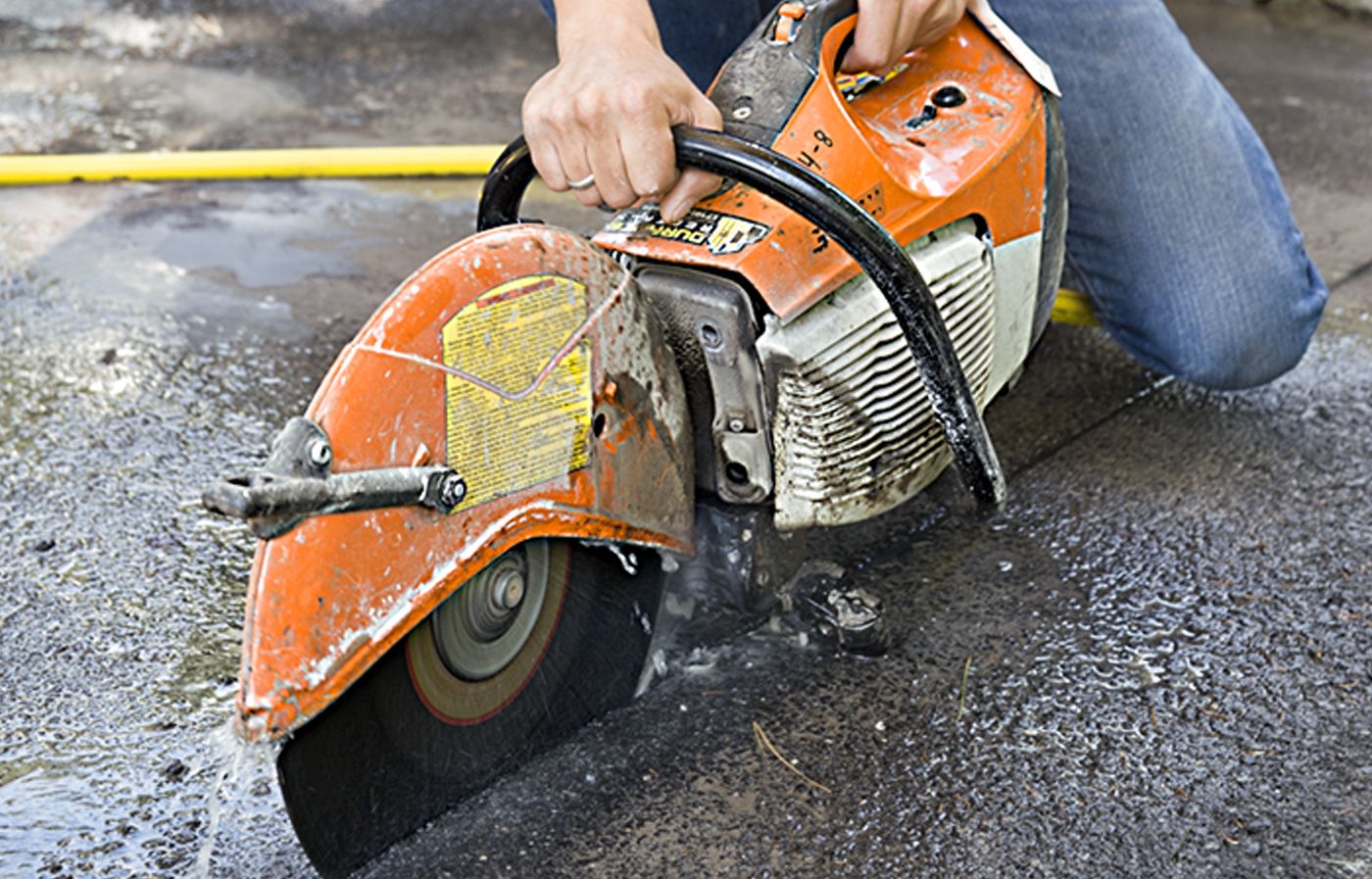
- Wearing safety glasses and hearing protection, use a concrete saw to score a shallow cut along your chalk line.
- Then attach a garden hose to the fitting on the saw and turn on a low flow of water to cool the blade and reduce dust as you cut all the way through the slab.
- Dip the blade into the line as you go rather than trying to force the saw forward. Gauge your cutting depth to avoid hitting the aggregate base.
4. Remove the Waste
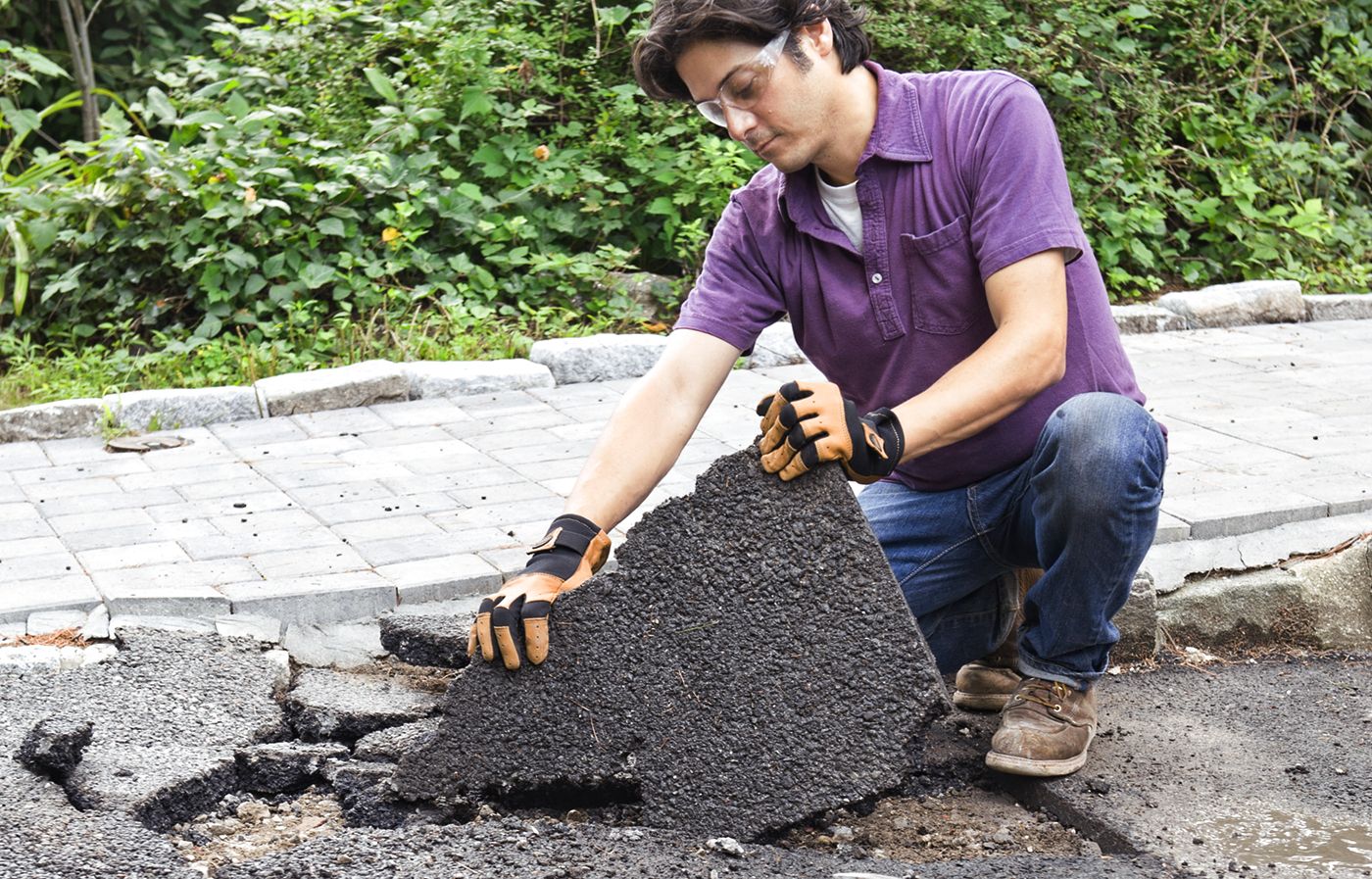
- Use a hammer drill to break up the remaining slab all the way to the street, then pry up the smaller chunks with a pick mattock. Most trash collectors won’t take asphalt or concrete waste, but check with local paving companies to see if they will recycle it.
5. Check the Depth
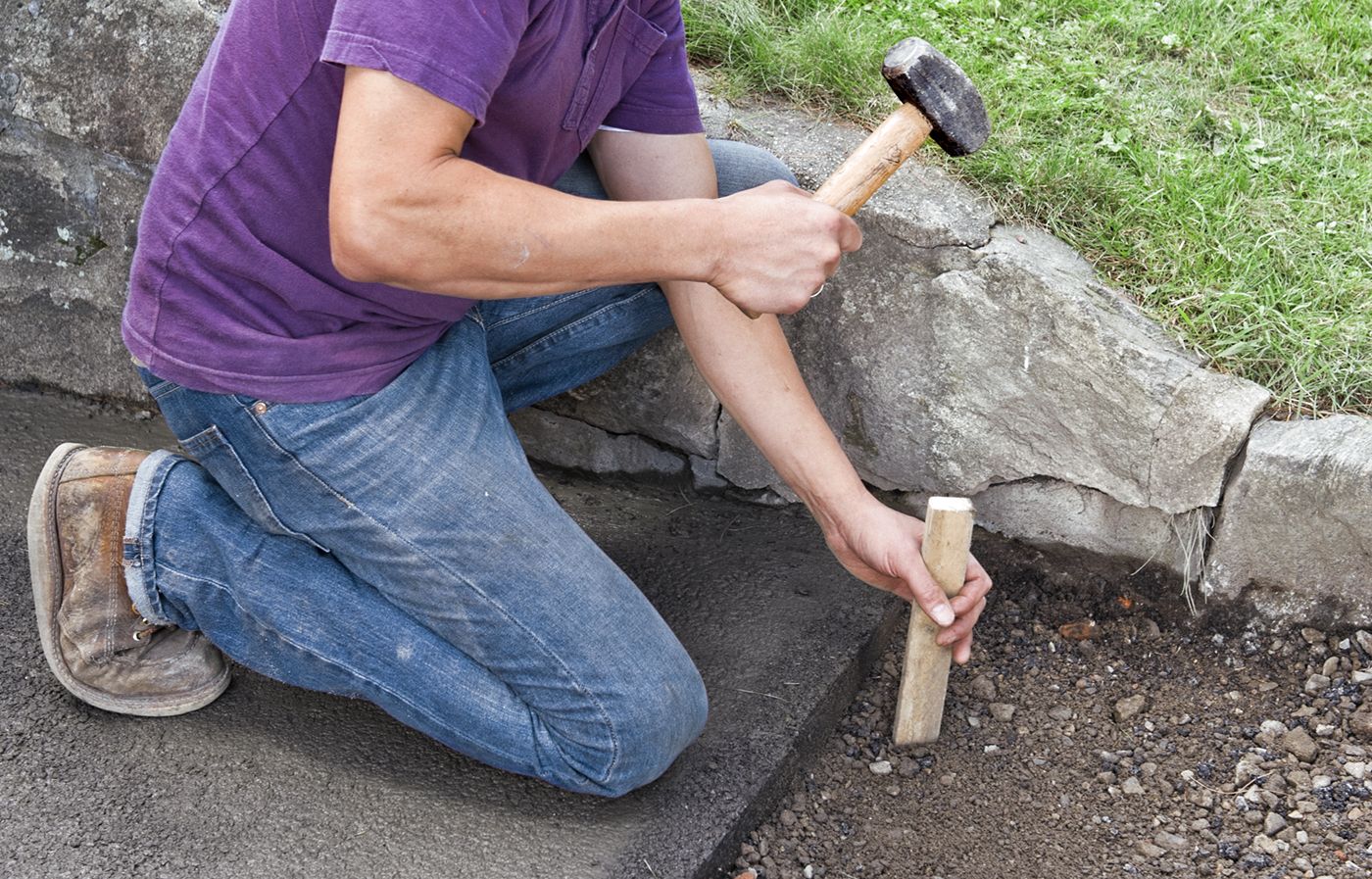
- The bed needs to be ½ inch deeper than the height of your cobbles (ours were 1⅝ inches tall, so we needed a 2⅛-inch-deep bed).
- Drive stakes into each corner and at the midpoints along its width.
- Tie mason’s lines between the pairs of stakes so that they run parallel to the centerline of the driveway. The lines should be taut, with one end flush with the surface of the driveway and the other end flush with the street.
- Measure down from the lines at multiple points to determine how much you need to excavate or add to the bed. If you need to build it up, use aggregate to do so, then compact it.
6. Add Leveling Sand
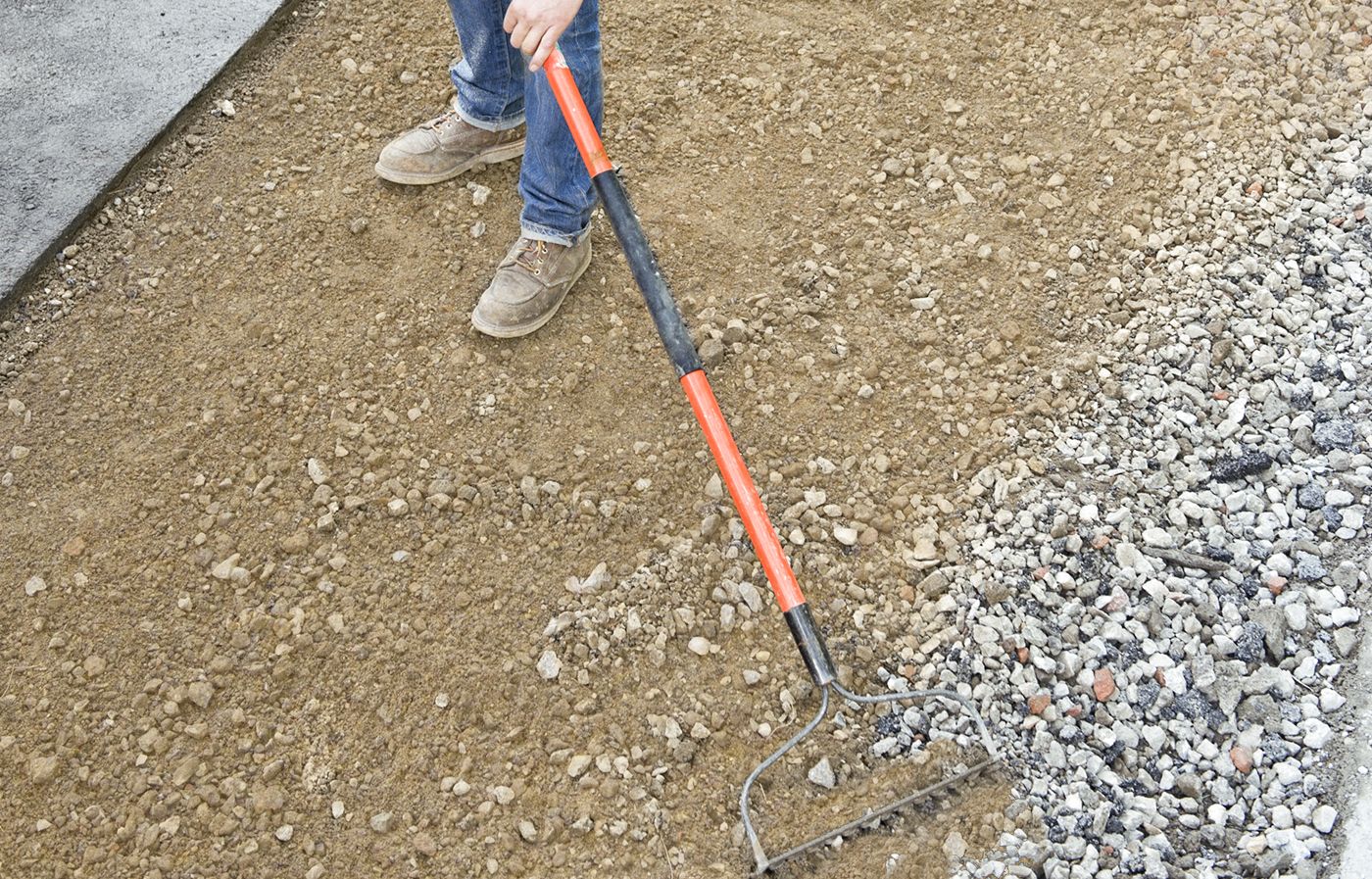
- Once your bed is at the proper depth, add a ¾-inch layer of leveling sand. Use a bow rake to spread it evenly across the bed, as shown.
- Double-check your work by setting a cobble along the edge. It should stick up about ¼ inch above the driveway, but don’t worry—they’ll be flush when you’re done.
7. Compact the Leveling Sand
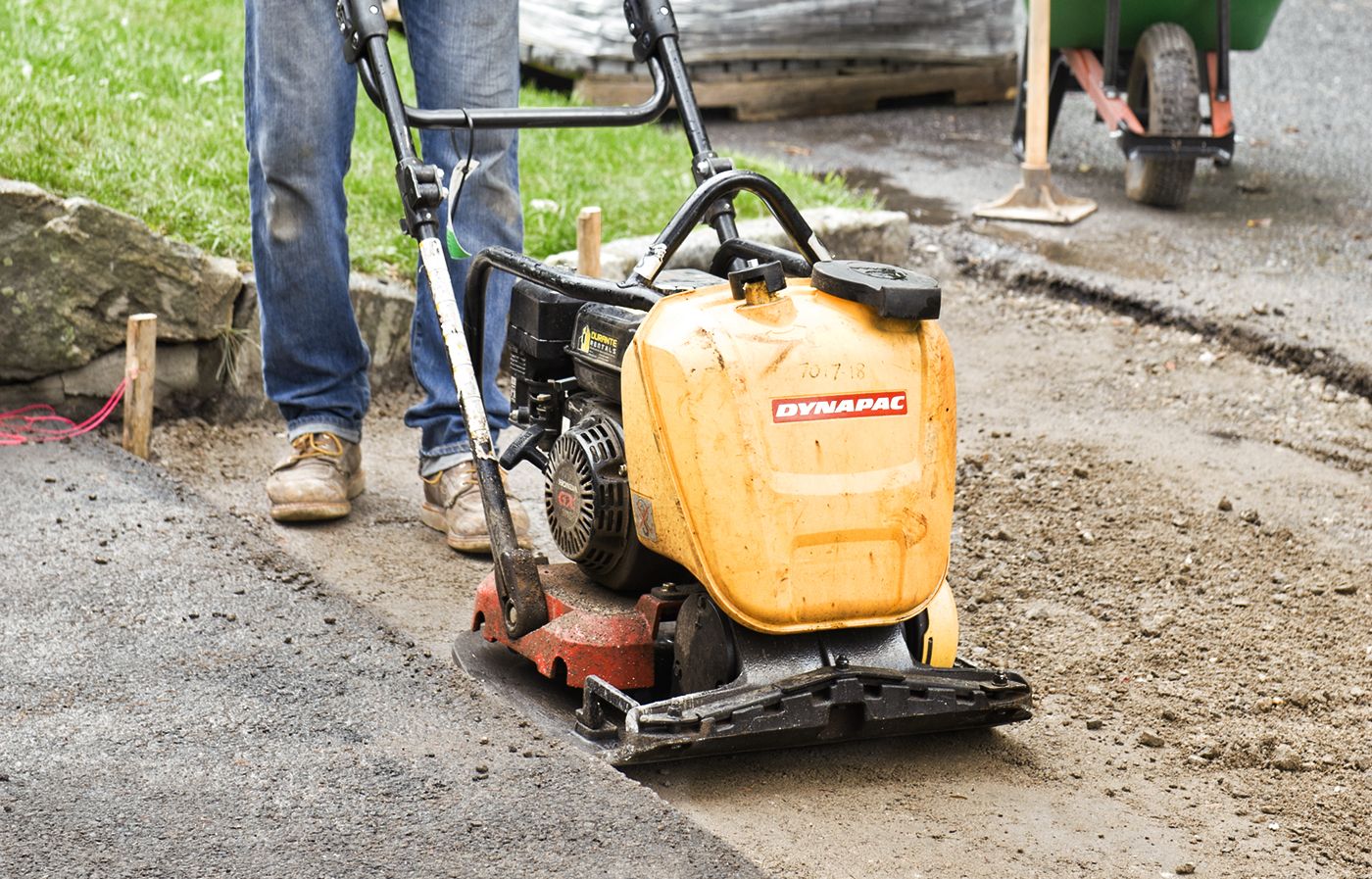
- Run a plate compactor over the sand to make it packed and smooth. You’ll know you’re finished when you can walk on the surface without leaving footprints.
8. Begin Laying the Cobblestone Mats

- Starting at a corner on the edge farthest from the street, lay the first cobblestone mat. Use a stake as a spacer between the mat and the driveway edge, for grout, and keep the mat parallel with that edge—not with the side of the driveway, which may fan out. You’ll fill out the sides later with individual cobbles.
9. Interlace the Mats

- Use side-cutting pliers to remove the half cobbles from the nylon grid on the open side of the first mat.
- Then remove the half cobbles on both side edges of the next mat. Lay the second mat so that it interlocks with the first. Continue this process until you reach the other side of the driveway.
- Snip off any cobbles that don’t fit against the side. Mark your cut line with chalk, score it with a mason’s chisel, and then break the cobble along the line.
10. Continue the Courses
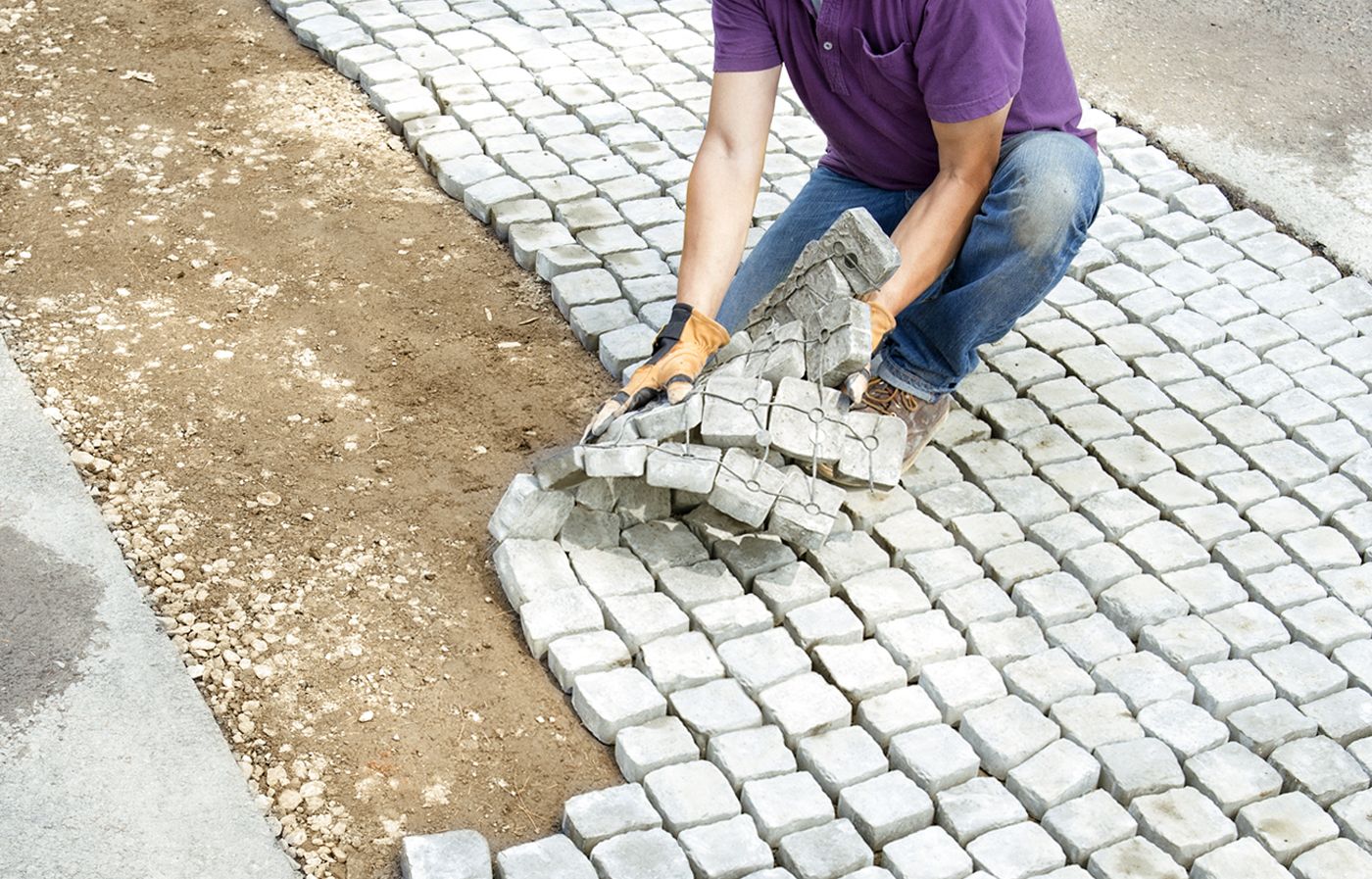
- As you begin laying the second course, make sure it goes down parallel with the first. Stagger your courses so that no two rows of cobbles have joints that line up.
- Continue laying mats until the entire area is covered.
11. Cleave the Edge Cobbles

- The mats likely won’t end perfectly at the sides, in which case you’ll need to fill in with half cobbles or with custom-cut whole ones.
- To make a custom cut, detach any whole cobble that doesn’t fit, and use a chalk stick to mark a cutline.
- Wearing safety glasses, place the cobble on a scrap board, set a mason’s chisel on the chalk line, and tap it with a hand sledge to score it along that line.
- Then set the mason’s chisel on the cutline with part of the blade hanging off and angle it toward the waste side, as shown.
- Strike the chisel with the sledge to break the cobble. Chip away any jagged edges with a brick hammer. Repeat with every cobble that doesn’t fit.
12. Fill the Gaps
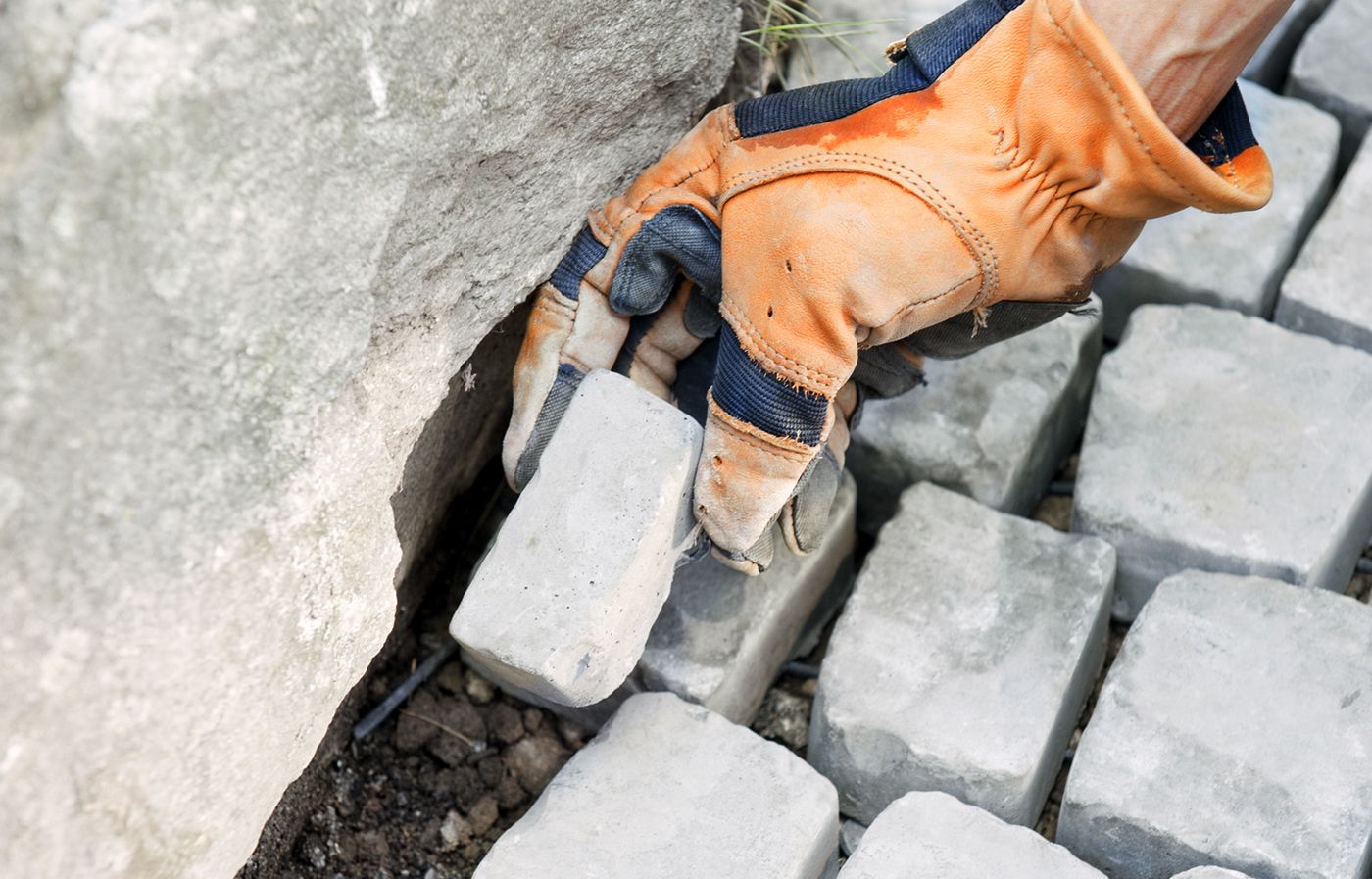
- Continue cutting and fitting cobbles along the sides of the apron as needed.
- Be sure to leave enough space for a grout line on all sides.
13. Compact the Cobbles
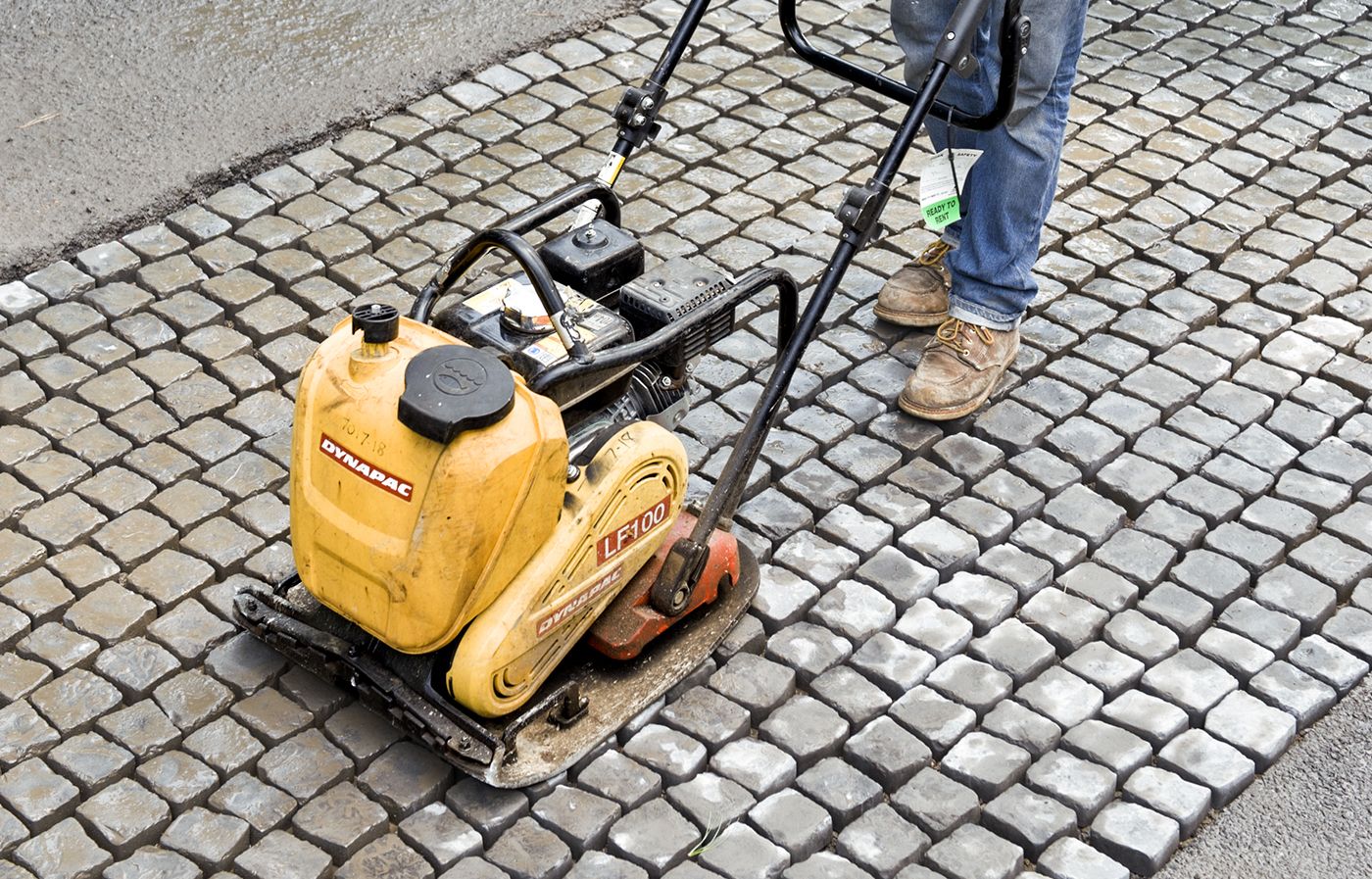
- Mist the cobbles with water and run the plate compactor over the surface to settle them into the leveling sand.
- Check to make sure that the cobbles are now flush with the asphalt and the edge of the street, and that there are no high or low spots on the apron. If you see a spot that needs adjusting, lift up that mat and either excavate or add more leveling sand, then compact it with a hand tamper.
- Apply a strip of duct tape along the perimeter of the apron to prevent these surfaces from being stained by the grout in the next step.
14. Mix the Grout
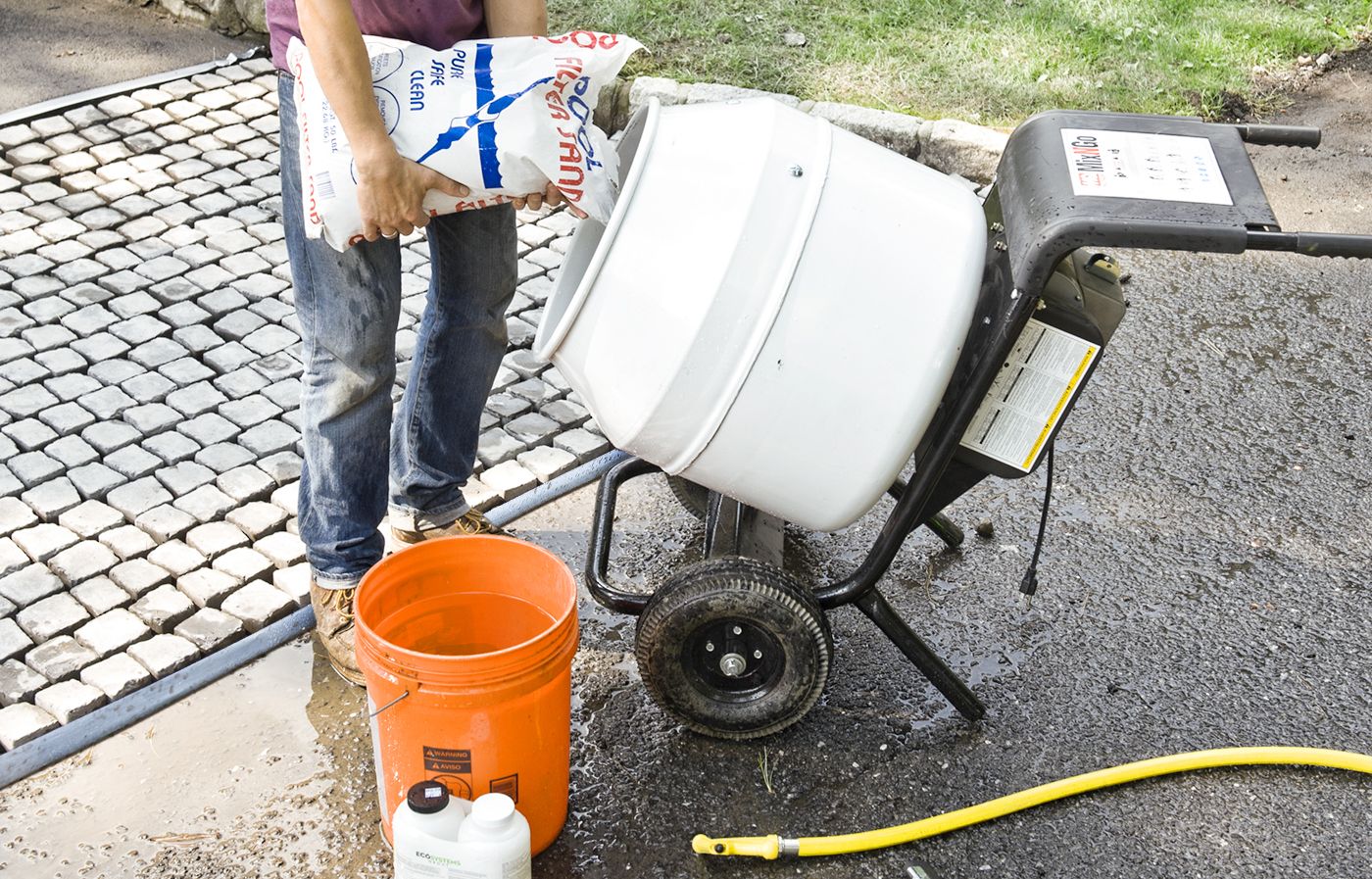
- We used the permeable epoxy grout recommended for this cobblestone system. If you do the same, combine the ingredients in a cement mixer and run it for two to three minutes, until the grout become viscous. You could also use polymeric sand or washed ⅜-inch gravel as permeable alternatives, but stay away from cementitious grout—it will crack.
15. Prep the Surface
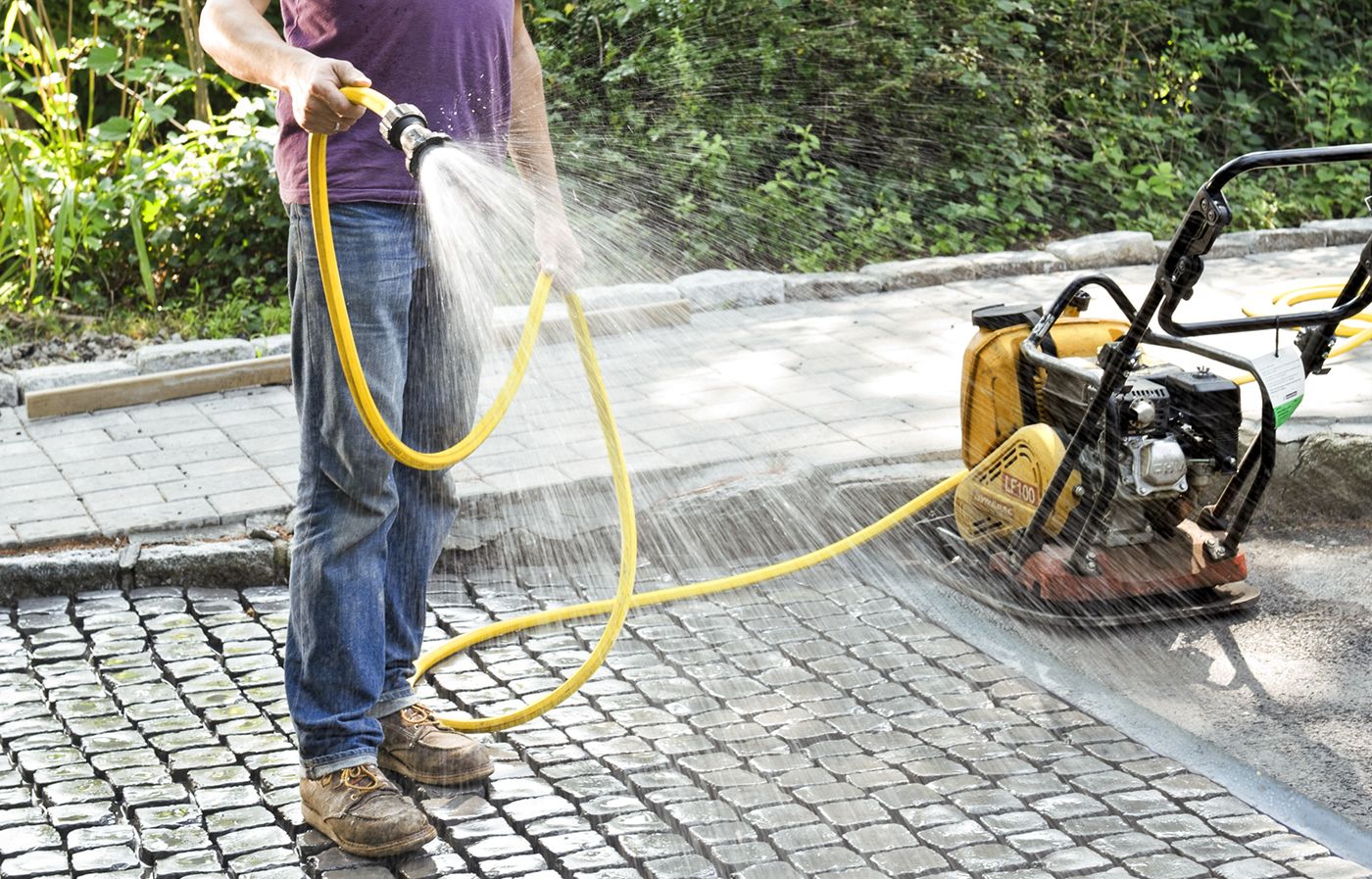
- Spray the cobbles with a hose to wet the entire surface. This will prevent the grout from sticking to the top of the cobbles.
16. Pour the Grout
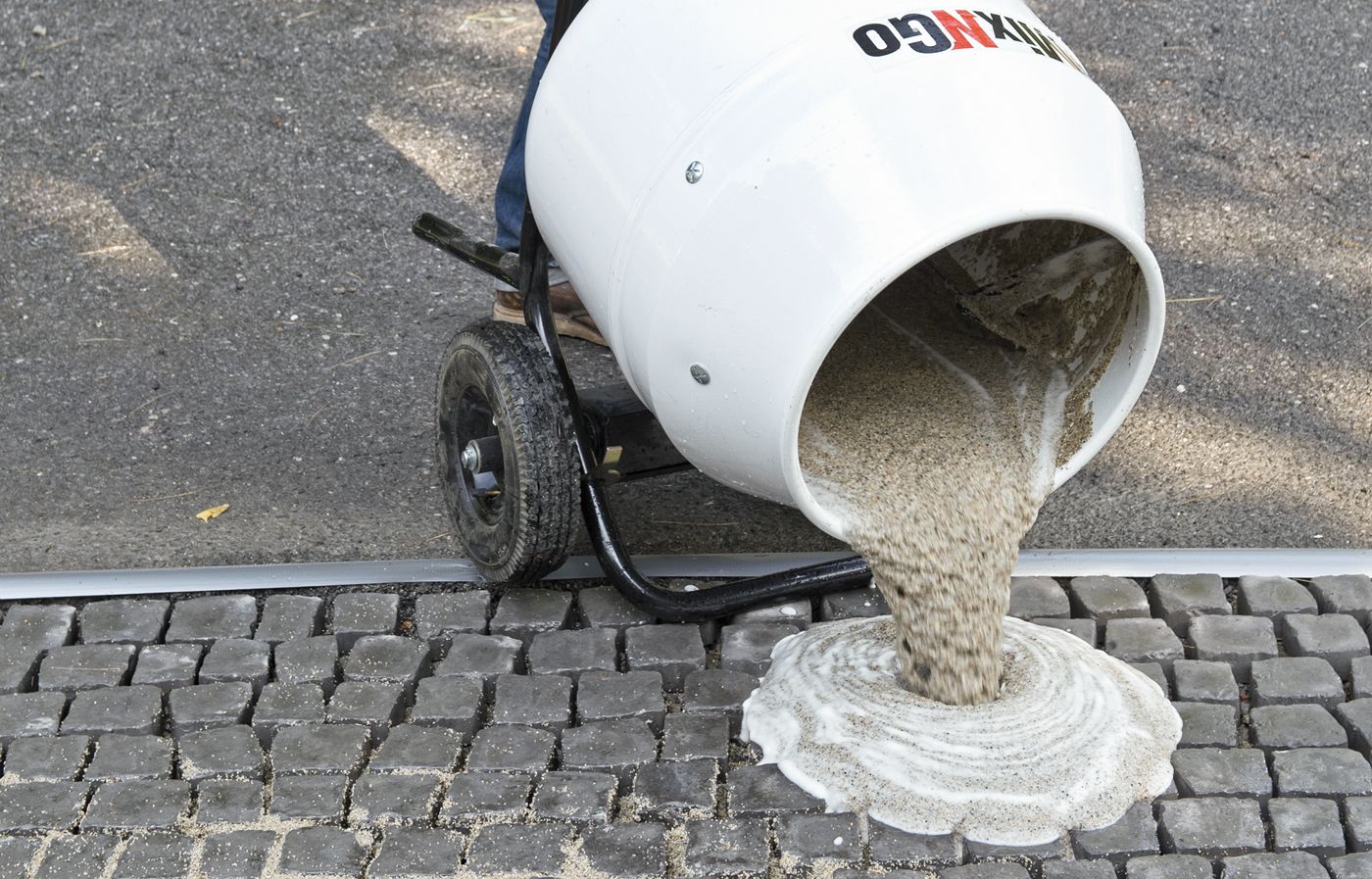
- Dump a portion of the mixer’s contents—only as much as you can spread in about two minutes, as the grout will begin to harden after that—onto the wet cobbles.
17. Spread the Grout on a Diagonal
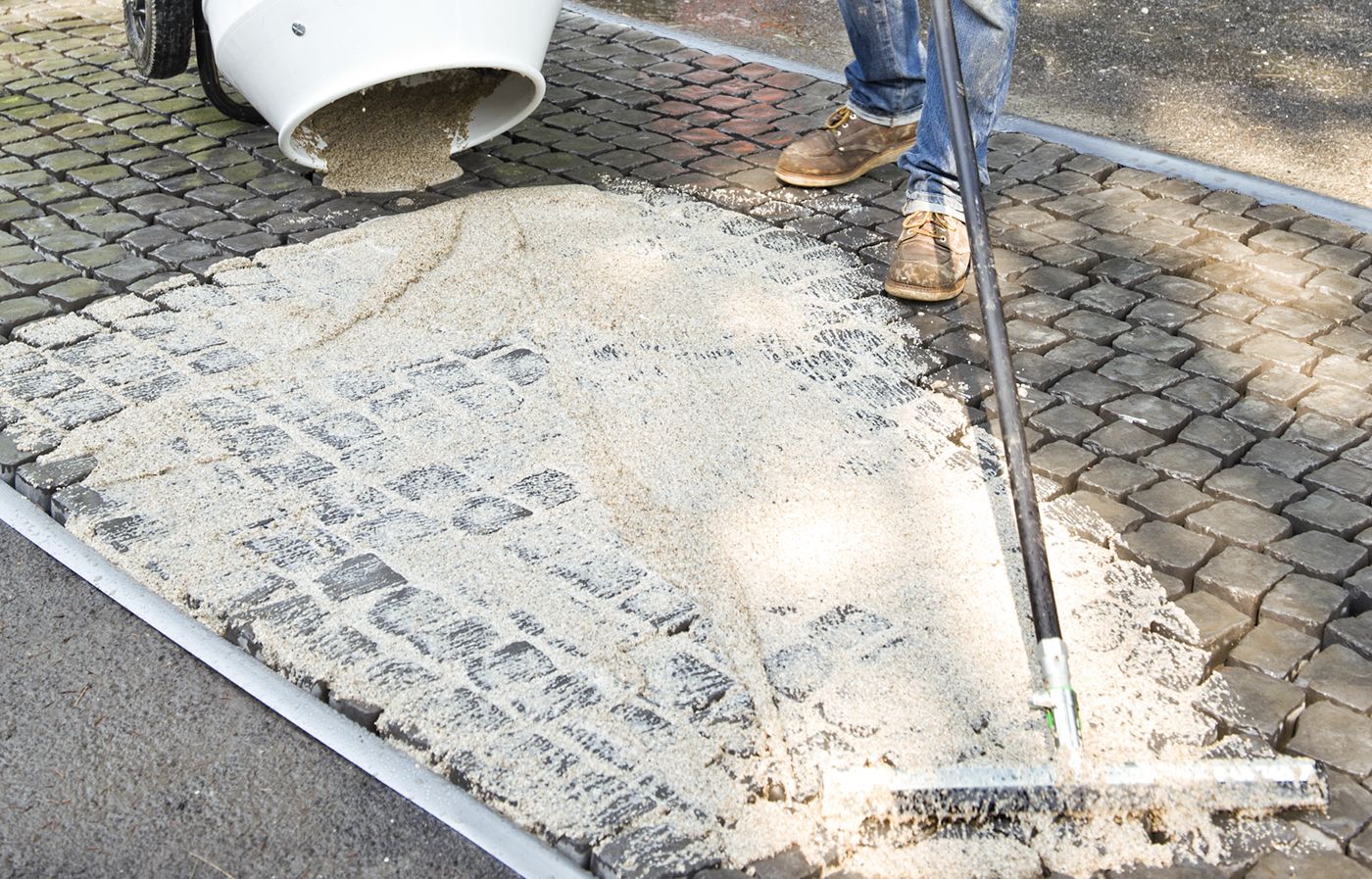
- Using a double-foam squeegee, spread the grout on a diagonal over the cobbles to fill the joints evenly and remove any excess.
- Then, just before the grout hardens, reach in from the edges with a push broom to clear away any crumbs of grout.
- Allow at least 24 hours for the grout to cure before walking on it and 72 hours before driving on it.
Driveway Aprons: Additional Tips for a Successful Project
Keep these additional tips in mind to avoid common issues and to safely and successfully install your new driveway apron:
- Weather Conditions: Choose a dry weekend with moderate temperatures for the project. Extreme weather can affect the curing process and could create unsafe conditions.
- Safety Gear: Always wear appropriate safety gear, including gloves, safety glasses, and a dust mask, especially when cutting and mixing materials.
- Quality Materials: Invest in high-quality materials. While they may be more expensive, they will provide better durability and appearance in the long run.
- Consultation: If you’re unsure about any step, consider consulting a professional for advice or assistance. This can save you time, money, materials, and potential mistakes.
